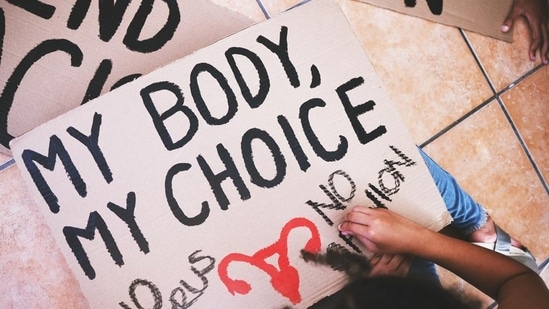| Hello and welcome to Mind the Gap, a newsletter that looks at the week’s gender developments. The Supreme Court’s judgment on abortion is path-breaking in more ways than one. How? Read on… THE BIG STORY: Why the Supreme Court’s ruling on abortion is creating waves The Supreme Court’s ruling on abortion as a right available to all women regardless of their marital status is creating a stir – and, for once, it’s for all the right reasons. The ruling, passed by a three-judge bench of justices D.Y. Chandrachud, A S Bopanna and J B Pardiwala, “can inspire new benchmarks on reproductive rights around the world,” said Human Rights Watch. A ‘very progressive judgment’ that addresses many of the anomalies in the existing medical termination of abortion rules, said Dr Nikhil Datar, a gynaecologist who has since 2008 helped at least 300 women approach the courts to terminate a pregnancy, and who still has a petition pending in the Supreme Court. A ‘welcome first step’ said Anubha Rastogi, a lawyer who runs the Pratigya campaign for safe abortion. “But the judges are only interpreting the law. Abortion is not a right available to women, yet.” The Supreme Court was ruling on an appeal against a July 2022 Delhi high court judgment that told an unmarried woman she could not abort a pregnancy of 23 weeks and five days. She wanted an abortion after her partner had deserted her and she didn’t want the stigma of being an unmarried mother. But the Medical Termination of Pregnancy rules, expanded in 2021, only included married women whose marital status had changed during their pregnancy, rape survivors, minors, women with mental disabilities, and women pregnant with foetuses that had severe abnormalities. It was silent on single women in consensual relationships. The Supreme Court gave permission to woman to have an abortion but since her petition involved ‘a substantial question of law’ took it up for further consideration. (I had written about the earlier ruling on July 24 in Mind the Gap. )  Representational Image (Source: Unsplash) Here’s why the Supreme Court judgement is remarkable: Constitutional rights The ruling is couched in the language of constitutional rights by saying that the exclusion of single women in consensual relationships was ‘unconstitutional’. The MTP rules create an ‘artificial distinction between married and single women’ and this is “not constitutionally sustainable. The benefits in law extend equally to both single and married women.” It talks of the Constitution as a living document that is capable of promoting and engendering “social change by ensuring that every individual is capable of enjoying the life and liberties guaranteed under the Constitution”. Acknowledges marital rape Provided that the wife is a major, Indian law does not recognise forced sex by a husband as rape. The Supreme Court judgment makes clear that the meaning of rape includes sexual assault by husbands, but with a caveat that the reference is restricted to the abortion law only. The judges were clear that the challenge to the martial rape exception is already pending before a different bench of the court and it was not adjudicating on it. Expands the definition of ‘women’ At the outset, the judgment clarifies that the use of the term ‘woman’ includes not just cis-gender women but also people of other gender identities who may require access to safe abortion. “This is a massive expansion of the existing jurisprudence to include protection to trans, non-binary, and gender non-conforming persons, who had previously lamented being left out of the scope of the MTP Act, and faced serious discrimination,” writes lawyer Rohin Bhatt in The Leaflet. Autonomy of women over their bodies The judgement notes that it is “the right of every woman to make reproductive choices without undue interference from the State.” It invokes Article 21 of the Constitution and states, “It is the woman alone who has the right over her body and is the ultimate decision-maker on the question of whether she wants to undergo and abortion….Depriving women of autonomy not only over their bodies but also over their lives would be an affront to their dignity.” Nor are doctors required to obtain consent from the girl’s family, documentary proof or judicial authorisation. Protects privacy of minors In cases where minors seek an abortion, doctors are not required to report the name of the minor to the police, as currently mandated by the Protection of Children from Sexual Offences Act. Under the Act, any girl below the age of 18 is deemed to be a minor and even if the pregnancy arises out of a consensual relationship, doctors are obliged to report it. Expands the idea of reproductive rights  Credit: Shutterstock The State, observes the judgment, has a positive obligation to protect the health, including reproductive health, of citizens. It calls upon the State to “undertake active steps to help increase access to healthcare (including reproductive healthcare such as abortion).” It asks the state to ensure : -
Dissemination about reproduction and safe sexual practices -
Access to contraception to avoid unintended pregnancies -
Affordable medical facilities in every district -
The equal and dignified treatment of all patients by registered medical practitioners Read the judgment here |